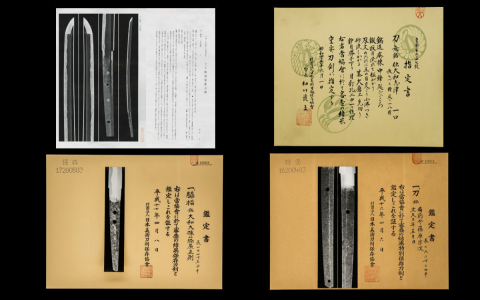Alright, so this question, “how much for a real katana,” man, that’s a can of worms I decided to open a while back. It wasn’t like I was planning to go all samurai, but I got curious, you know? Saw some cool stuff in movies, then a buddy was talking about one, and I thought, “Hmm, I wonder what one of those actually costs.”
My Initial Dive Down the Rabbit Hole
First thing I did, like most folks, was hit the internet. Typed in “real katana price” or something similar. And whoa. The results were all over the place. You’ve got these flashy things for like, $50, $100. Then you see numbers with a lot more zeros at the end – thousands, even tens of thousands!
It was pretty confusing, I gotta tell ya. What even is “real” when the prices are that different? Those super cheap ones? My gut told me those were probably just for show, wall hangers, you know? Stainless steel, shiny, but you probably wouldn’t want to swing it too hard.
Figuring Out What “Real” Meant (to Me, Anyway)
So, I started digging a bit deeper. What makes a katana, well, a katana? I learned it’s not just about the shape. A “real” one, for practical purposes (even if that purpose is just appreciating the craft or some light cutting practice), needs to be made of proper steel. We’re talking carbon steel, not the stainless stuff you find in kitchen knives or those cheap decorative swords. Stuff like 1045, 1060, 1095, or T10 steel kept popping up.
And then there’s how it’s made. The whole differentially hardened blade thing, with a hard edge and a softer spine – that’s a big deal. That’s what gives you that cool wavy line, the hamon. And the tang, the part that goes into the handle, needs to be solid, not some flimsy welded-on bit.
Breaking Down the Price Brackets I Found
Once I had a better idea of what I was looking for, the prices started to make a bit more sense. Here’s kinda how it broke down in my experience:
- The “Entry-Level Real” Katana: I found you could get something genuinely functional, made of decent carbon steel like 1045 or sometimes 1060, for around $200 to $400. These are usually no-frills, machine-made mostly, but they’re built to be used. The fittings (the tsuba, handle wrap, etc.) are usually basic, but solid enough. Good for a beginner or someone who wants to try cutting without breaking the bank.
- The “Mid-Range Enthusiast” Katana: Step up to the $400 to $800, maybe $1000 range, and things get nicer. You’re looking at better steels, like 1095 or T10, often with more pronounced and attractive hamons. The fittings are usually better quality, more traditional materials, better polish on the blade. These feel more like “proper” swords, if you know what I mean. More attention to detail.
- The “High-End Production & Semi-Custom” Katana: Now we’re talking $1000 to a few thousand dollars. Here, you’re getting into swords with really good craftsmanship, excellent materials, maybe some customization options. The blades are often hand-polished, and the koshirae (the fittings) can be quite ornate and well-made. These are serious pieces.
- The “Art Sword” / “Master Smith” Katana: Beyond that? You’re in the realm of true art pieces, often made by renowned smiths using traditional methods. These can go from $5,000 on up to… well, the sky’s the limit, especially for antiques or swords made by Japanese national treasures. I didn’t even bother looking too hard here, that was way out of my league for just satisfying curiosity.
What I Took Away From It All
So, what did I learn from all this poking around? Mostly that “how much for a real katana” doesn’t have one simple answer. It really, really depends on what you mean by “real” and what you want to do with it.
If “real” means it won’t snap if you look at it funny and it’s made of actual sword steel, you can get started for a few hundred bucks. If “real” means something close to what a samurai would have carried, with all the artistry and materials, then you’re looking at a much bigger investment.
For me, just understanding the different tiers and what went into them was the interesting part. I didn’t end up buying one, my apartment’s too small and the cat would probably try to sharpen her claws on it. But at least now, when someone asks, or I see one in a movie, I have a much better idea of what’s what. It’s not just a pointy piece of metal; there’s a whole world behind it. And like anything crafted, you generally get what you pay for.
